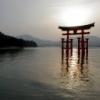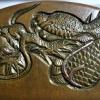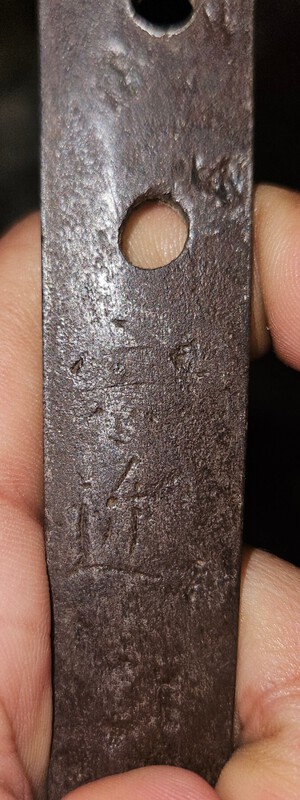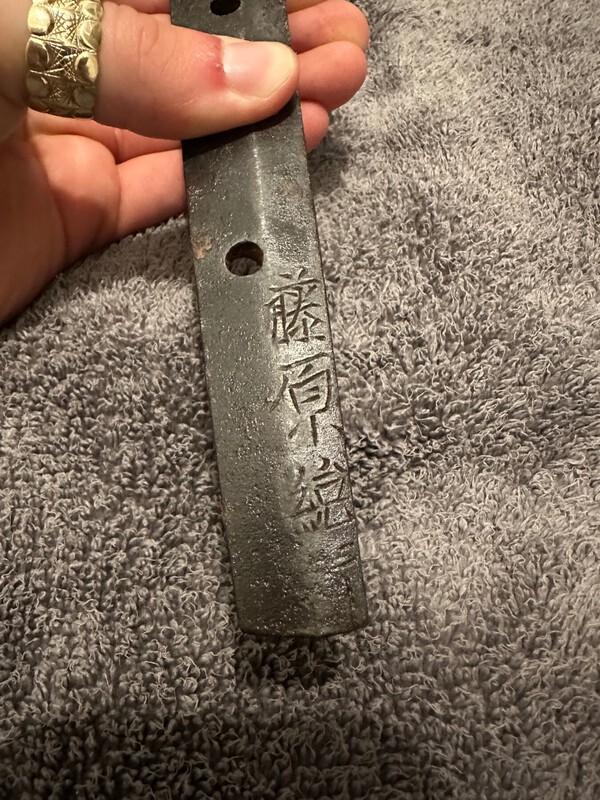Leaderboard
Popular Content
Showing content with the highest reputation on 05/06/2025 in all areas
-
Here are the amount of swords NBTHK has had passing through each phase of their shinsa. The numbers are not 100% correct but in the quite close neighbourhood and they will hopefully give you lot of insight. Starting from highest tier to lowest Tokubetsu Jūyō - c. 1,200 swords Jūyō - c. 12,000 swords Tokubetsu Hozon - c. 80,000 swords Hozon - c. 125,000 swords I am quite sure there are 2,000,000+ swords in Japan. I made a post about license numbers as it is a running system and you can see it here: https://www.militaria.co.za/nmb/topic/52155-naginata-naoshi/page/4/#comment-545277 The problem with running systems is that if the sword leaves the system (for example advances to tier above in NBTHK system) it just remains in the system as number even though the actual sword would not be Hozon papered anymore. Similarily if the sword returns to the system it gets issued a new number (sword gets a new license number when it returns to Japanese system, or for NBTHK shinsa the sword gets resent for Hozon and it gets a new paper and different attribution). Unfortunately these are the closest numbers that I can get. About the pass factor, I chose 2 sessions slightly randomly as they have pretty much the same number of swords sent in. And I do own books for both of the sessions so I have data on every sword passed. Jūyō 68 shinsa had 817 swords sent in to the evaluation. Out of them 66 swords passed. With my math that would be 8,1% pass rate Jūyō 25 shinsa had 819 swords sent in to the evaluation. Out of them 341 swords passed. Using the same math it would be 41,6% pass rate Pretty big difference... In the 2000's I think the pass rate has mostly fluctuated between 10-20%. There are some below that and some above that. It seems like the most recent ones 68,69,70 have all have been judged very stricly with very small amount of swords passing through.7 points
-
Rayhans Hirotsugu story is amazing one and it highlights many things that go into submission and collecting at high level. Things that I and I suspect many others have not even thought about. I would have been perfectly happy with the sword in the original polish but more experienced eye saw how it would benefit from top class polish and the end result is most likely wonderful. I hate the business side talk about monetary values etc. but as this hobby is so connected to dealing items and various papering tiers it is unfortunate part of it. To me it just makes wonderful historical items feel bit commecialized like they are more common goods that are just traded over and over. However the talk and discussion about Jūyō items is relevant in the sense that it gives bit of "common ground" for everyone to the discussion. Of course we all have varying understanding about them. Many might have never seen one in hand, some might get to occasionally view them in hand (I admit for me even after 20+years in the hobby it is always a rare and exciting chance whenever I get to hold a Jūyō level sword in my own hands [and a fun fact they have all been wonderful swords, even though we might talk bit negatively about some Jūyō swords to a very average collector like me they are always very good quality swords]), and yes we do have collectors in the forum that are at the top level and for them these are the types of swords they are accustomed to. I think the best fact in NBTHK Jūyō is that the swords get documented to be used as a reference. Of course limited number of people will have access to the information but it is still one of the best resources towards high end items. It is also a good way to get the discussion going as people will at least have some experience of them. Trying to build up discussion about some shrine swords would prove most likely much more difficult as maybe only an handful of members would be aware of those particular swords. Still online access to Japanese dealer sites, lots of international people visiting DTI, many things like that make Jūyō swords appear to be more common than they actually are. I know I have done some calculations lately about total number of swords in Japan, as well as I should have fairly accurate guess on the number of Hozon and Tokubetsu Hozon passed items. Jūyō and Tokubetsu Jūyō you can just actually count as they are in the references. Jūyō item % is very tiny when you compare it to the number of Japanese swords in Japan. When thinking about Jūyō sessions one thing to look at is also the pass factor. I know few forum members excel in stuff like this, and have made amazing research on this. There is huge variance between the sessions in percentage of submitted items that pass. NBTHK does not hide this information at all, numbers of sent items and passed items are published in their Tōken Bijutsu magazines. Of course magazine is only sent to members, however recently NBTHK has published the results on their website too so everyone interested could have viewed them there. Like Franco and Colin wrote above it is extremely complicated with so many factors it goes way over my head. I have only fairly recently understood how important historical provenance also is. Of course it makes sense in the way that swords owned by high ranking people and families back in the day were quite often very high quality items.6 points
-
I think it's important to acknowledge what many of us come to realize over time: not all Juyo sessions are created equal—but great swords are great swords, regardless of when they passed. That’s really the heart of what Darcy Brockbank tried to convey consistently in his writings. A masterpiece in Session 22 is still a masterpiece, just as a weak sword that slipped through in Session 48 is still a weak sword, regardless of the paper or session. The problem is, markets are driven by perception, and the “ladder fallacy” isn’t going away anytime soon. I’ve seen some collectors—well-meaning but only partially informed—declare they’d “never touch a sword from Sessions 20–28,” as if the entirety of a session can be discredited. In reality, the criticism was always about the marginal swords that got a generous nod, not the standouts. But because many collectors aren’t equipped to evaluate nuance—especially through photos or oshigata—the default becomes blanket dismissal. On the flip side, we also hear: “Oh, that’s from Session XX, which was a hard session—so it must be good.” Maybe. Maybe not. It still comes down to the individual sword: its workmanship, condition, and how it stands against the best examples of that smith or tradition. Another overlooked complication is that the meaning of certain terms and designations has changed over the years—den, Sue-Sa, and others have shifted subtly (or not so subtly), without much formal explanation. So even the terminology isn’t a static yardstick. I’m not anti-paper—far from it. Papers serve a vital role, especially in establishing market trust and valuation. If a top-tier Japanese dealer offered me an unpapered piece, I might trust their word based on reputation. But the sword doesn’t become “real” to the market until the papers catch up. Just look at Darcy’s own experience buying that Kanemitsu: no matter how good his eye, the validation didn't arrive until the hozon came through. At the end of the day, your name only goes so far unless it’s backed by credentials or recognition. I could call a sword “Juyo quality,” and even if I’m right, it’s just my opinion—until the NBTHK agrees, it doesn’t move the needle for most buyers. So yes, papers matter. And yes, the Juyo sessions are uneven. But in the end, it always—always—comes down to the sword itself.5 points
-
Hello Max, Let me add mine to the voices who have said it is a minor flaw and not worth worrying about. Even in your photos it is barely discernable. For the price you paid, I think you've done well to get a papered blade w/koshirae. As a first blade, it is perfectly fine, and superior to the first blade that many collectors purchase, as many of us bought unspectacular or problematic mumei pieces as an entry into the sword world.3 points
-
My first impression of this hachi is that it has some age (the excellent condition not withstanding). The shape, koshimaki meant to fit a manju shikoro, the robust haraidate with fairly deep irihasso and the mabezashi connected by iron sanko no byo would not point to a late Edo dating for me. Do you have pictures of the interior of the hachi?3 points
-
Hi Edward, Your grandfather brought home a Type 95 NCO sword. This is an early one which features the copper handle (tsuka). I believe less than 7,000 of these were produced before production shifted to aluminum handles. It looks like the original scabbard was replaced at some point during the war based on the existence of the chape on the scabbard drag. There should be a serial number on the throat piece (opening). This is common especially on the early copper swords. It's a very desirable sword among collectors of WW2 Japanese swords, so take good care of it. Conway3 points
-
Let me be the first: my kiridashi forged from tamahagane steel. Its geometry is traditional for the Mino school, seamlessly blending tool and weapon thanks to its versatile grip. It was crafted by the finest blacksmith in my country - a master with extensive experience, having worked with mr Fujiwara Kanefusa 25. He utilizes entirely traditional methods. He's been incredibly busy lately, concentrating on sword making, and his work commands prices far beyond my reach as a student. Nevertheless, I'm profoundly grateful he dedicated his time to creating this exquisite piece for me.3 points
-
万 is a simplified version of 萬, which is the older form. Some authors prefer the older form... -t3 points
-
Comment on the hidden cross thing. I have seen a number of articles claiming basically any tsuba with a quadrilateral symmetrical design is a hidden cross. I disagree for a number of reasons: Quadrilateral symmetrical design tsuba predate Christianity in Japan The Roman Catholic missionaries used a Latin cross. The even-arm cross was used by the Greek orthodox church, and were not present in Japan Christianity was practiced openly in the Oda and Toyotomi regimes, no need to hide it. Hidden cross tsuba that I have seen that look legit have a Latin cross inlaid in the seppadai area, so it can't be seen when mounted. These probably date during the Tokugawa Shogunate If a cross form tsuba represents anything, it is more likely the character Ju (+),or, how the Japanese write the number 10 The Ju-mon was used by the Shimazu and related clans in Satsuma. They were overtly anti-Catholic3 points
-
Part 2: After the sword successfully passed THozon i was elated and my wife more so, so then I thought, Juyo next maybe? I asked Paul what he thought " No comments on Juyo, you want to try then I will submit but I make no comments" this was the professional thing to do, every sword enters at its own merit and on top of that it was a Muromachi sword. 8 years ago passing Muromachi was slim at best. We submitted and the sword failed, oh no! Ultimately I was having a conversation with Darcy and mentioned the failure to which he asked to see the images of the blade. That night at 2AM ( Darcy and I shared the fact we never sleep much) he sent me a message saying that the sword should be polished by Saito sensei in sashikomi style and try for Juyo one more time. I agreed and Paul sent the sword in with Saito sensei (the polish was in 5k USD range) The sword was submitted again and passed! And is now my wifes' sword.3 points
-
Just wanted to share my experience. I received a blade from a dealer in Japan the other day. It was shipped using the antiques tariff code and passed through US customs on May 2nd. No tariffs / duties! I honestly had no idea what to expect.2 points
-
Rob, I understand. I will check out Lulu.com and report back here2 points
-
I think your mind is already made up but you're looking for some kind of validation. If you're buying this for a cheap price (please let us know your purchasing price) then go ahead and do it if it's a deal you've made with a friend. From the perspective of a collector I think we would all like to see better images and clear images of the self made certificate. Personally if you have been waiting a long time to buy an authentic sword then why go this route?2 points
-
Steve, for details and examples of Kojima Katsumasa go to NMB Downloads (line at top on page) and find paper " Kojima Tokijiro Kanemichi etc" . That is interesting example of a wartime civilian koshirae.2 points
-
As a suji kabuto, everything is there. It has four shiten-no-byo and four hibiki-ana.You have some of the rivet heads showing. No hachimanza, but some people prefer it in the raw state, and quite well finished even without the tehen kanamono. The haraidate-dai has two holes in vertical alignment and iri-hasso in the top edge. The shikoro would have been.. manju shikoro? The mabisashi is fairly steep and has a good shape.2 points
-
I can’t tell, Colin. The manufacturing date is quite late. Maybe it never had a customer, so no need to sign the work. The patina is very evenly no wear, no signs of a once mounted shikoro or tehen no kanamono…however, I don’t know. BTW, it’s not that uncommon that helmets, although of good quality, weren’t signed by the maker. Mumei, so to say, for what reason ever. Occasionally you also find merely dates or/ and invocations are inscribed…2 points
-
https://www.jauce.com/auction/p1182666197 A rather "primitive" form of 'hot stamp' decoration likely to do with Tempo type guards? The fukurin added much later to dress the design up. There tends to be a lot with this Chrysanthemum or star punch design - very irregular and there is not a lot of consistency with the punch depths. Gives you the impression of somewhat hurried manufacture. Early Edo ? Another https://www.ebay.com/itm/405453746331 Close design but without the added fukurin [asking price is a little high in my opinion ] Similar attached to a Wakizashi here. https://www.paulbert-serpette.com/en/catalog/categories/ancient-weapons/Japanese-sword-wakisashi-Japan-edo-period-1603-1868-0 Reddit has some orientation problem! Hope this gives you something as a reference.2 points
-
Just seen this, apologies. The leaves are traditonally said to be mugwort, designating a sage or shaman as they have strong healing properties. In fact the name moxabustion comes from them, the active part being 艾 Mogusa (蓬 Yomogi plant) in Japanese. (Think 'mogu' and 'mogi' and 'mugwort') They can be dried and powdered for use in burning over acupuncture points, but I have found their compressed juice will seal and heal a knife cut beautifully. They are also used in food, such as Yomogi-mochi rice cakes2 points
-
For the sake of completeness, the date is “万延元年十一月吉日” (on a lucky day 11th month first year Man’en = 1860). The smith, like oli pointed out, is “月山貞吉作之” (Gassan Sadayoshi kore o saku = Gassan Sadayoshi made this).2 points
-
G'day Alexi, I have handled a few of Gassan Sadakatsu's blades and I would describe them as typically having a wide shinogi rather than a high shinogi. I have no idea how this translates to durability. I doubt that many have ever been used for test cutting. Cheers, Bryce2 points
-
2 points
-
I am in the airport grabbing a flight so I will post from my cell phone, please forgive the compressed images. A story of taking a sword to Juyo follows, part 1: Around 8 years ago my wife and I were travelling Japan and had hit Osaka for a few days. I knew of a sword dealer there that I had wanted to meet for a while. We stopped in for a brief look at some swords and sitting in full display quietly at the end of the shop was a Muromachi Hirotsugu sword. It looked off for Hirotsugu because of the polish but was clearly Hitatsura. See attached the pictures of the sword before and the papers before. I decided to ask that awkward question and my wife said "only if you gift it to me" I said "ok". I put down a deposit and held the sword there for a few weeks and told the dealer I would pay in full as soon as possible. Getting back to Tokyo I asked Paul Martin if he was passing by Osaka at any point would he be willing to consult on the sword after I had paid for it, he agreed as he was filming in the area and took time from his schedule to help me on a detailed consultation. His consensus was that the sword was good 👍. I asked if he would take the sword back with him for further work and maybe help with Shinsa. He agreed and the sword made its way back to Tokyo. Having the sword in its' current polish i asked Paul Martin to assist with a submission to Tokubetsu Hozon shinsa and we had the sword through in one sitting Hozon to THozon. See attached.2 points
-
Rayhan has made so many interesting topics lately. I have spent a lot of time going through the Jūyō items and I quite recently started what is my probably 4th time going through all the books that I have. With the amount spent I think I should be able to make some guesses what would pass but to be honest I am pretty much clueless. Part of it is my own mentality for sword appreciation being different and huge part of course is not seeing the items in person. There are of course some what I would think as "slam dunk" items yet I have heard that some of the amazing Tokubetsu Hozon items have been sent to Jūyō and they failed, and that I cannot understand as you get so many X ō-suriage mumei swords passing while genuinely rare item would be failed. As a long time NBTHK member I am still not a fan of their tiered shinsa system but it is what it is. For ō-suriage mumei items I would think the most important thing at Tokubetsu Hozon would be the attribution it gets from NBTHK. It is bit sad to say but rather than item quality itself I would be more focused on the attribution if I would think about Jūyō submission (now I have to state I have never sent an item to NBTHK shinsa at any level and not sure if I will). So as a mind game you have a nice ō-suriage mumei sword that you think is from Nanbokuchō period and you send to shinsa - then it returns as Echizen Rai (越前来). You are bit unlucky as there is only 1 mumei Echizen Rai that has passed Jūyō shinsa, so I would think you could try Hozon & Tokubetsu Hozon again and see if you will get a better attribution next time. Now lets say you will get Nakajima Rai (中島来) as an attribution, then there are 64 that have passed Jūyō. There is even one Nakajima Rai that has passed the prestigeous Tokubetsu Jūyō, Nagoya Tōken World has it in their collection, I saw it there last year and it seemed to be a fine sword. https://www.touken-world.jp/search-noted-sword/tokubetsujuyotoken-meito/17432/ Then as 3rd spot in the game you might get Rai Kunimitsu (来国光) attribution you can give a big thumbs up, there are 114 ō-suriage mumei katana with attribution to Rai Kunimitsu that have passed Jūyō (yes few of them have kinzōgan etc. but that is often a form of attribution too and I don't see that relevant to prove the point). And 21 of them have went on to pass Tokubetsu Jūyō. I have been very lucky to see in hand the amazing Tokubetsu Jūyō Kunimitsu of Samurai Museum Berlin and also a very stunning Jūyō Kunimitsu last summer in Kawagoe sword meet where multiple NMB members were attending. Yet I have seen few in museums that to me don't seem all that impressive. Now those specialized in fine details in swords might say that there is no way that attributions would vary so much. I think yes and no, as the fine details are not really my thing. Sometimes I just find myself wondering why something gets an attribution it gets, and wondering if trying the process again would change the outcome. I also believe that people in Japan and even internationally who are "in the circle" for Jūyō and Tokubetsu Jūyō swords know if certain items have been sent for example Tokubetsu Jūyō before. Unfortunately I am not and will not be as those swords are beyond my means and also not often the main type of swords I try to focus my research on. The fact is that once the sword has passed Jūyō shinsa it is a Jūyō sword. Of course all of them are not equal. I would personally think that the only Jūyō sword of a smith Y would be more important piece than 1 out of 100 mumei attributed swords to smith X. However I think the vast majority will think the opposite way, and people want to get more and more items by these same prestigeous smiths. As some may know I have tendency to track swords at bit obsessive level. Now I looked and I have documented 19 swords for sale at Hozon & Tokubetsu Hozon level that have since passed Jūyō (one has also passed Tokubetsu Jūyō). Here is one example by Kanemitsu. I personally like the shape and size but that is my thing. I remember discussing this back then with several people and nobody was that impressed about the sword. https://web.archive.org/web/20201031200433/https://www.nipponto.co.jp/swords6/KT332646.htm https://www.nipponto.co.jp/swords6/KT332646.htm Here is pretty nice one, rare Bungo smith and dated to 1451. It passed in Jūyō 67, I just don't feel like taking out books and taking pictures of them as it has already taken so much time to think and type this post. https://www.sanmei.com/contents/media/A21591_S1283_PUP_E.html This Uda Kunifusa attributed one also passed session 67. https://web.archive.org/web/20210621170603/https://www.samurai-nippon.net/SHOP/N-564.html This Hatakeda Sanemori attributed one passed Jūyō session 65 and Tokubetsu Jūyō 26 https://www.aoijapan.net/katana:kinpun-mei-gold-powder-hatakeda-sanemori/2 points
-
Hi everyone, I wanted to share a book I’ve written — Samurai and Shōguns. Some of you may know me as a long-time collector, especially of pre-Edo tsuba, and I’ve had the pleasure of corresponding with a number of fellow enthusiasts over the years. This book grew out of that lifelong interest. It’s not an academic monograph, and I don’t pretend it’s breaking new ground for specialists. But I’ve done my best to go beyond the usual pop-culture image of the samurai, and to bring out the complexity, contradictions, and lesser-known sides of their world — things I found fascinating and thought others might, too. The book is written for a general audience, but with care for accuracy and detail. It’s also richly illustrated with woodblock prints and historical photographs — something I personally value in a good history book. If you’re curious, I’d love for you to take a look. And if you do, I’d be grateful for your honest thoughts — whether you spot something insightful, or something that makes you wince. Here’s the link: https://www.amazon.com/dp/B0DHPD39RM?ref_=cm_sw_r_cp_ud_dp_9Z7P2NDJ0ZK83R9E7RWX Thank you for looking PS: This dramatic layout of the book against the backdrop of a poem and scrolls is pure marketing, not to be taken seriously. I just thought it looks nice1 point
-
1 point
-
Marius: Is your book available anywhere outside of Amazon? I'd love to get it, but an trying to avoid supporting Mr. Bezos as much as possible :-)1 point
-
Edward, You can read up on these on Ohmura's site: NCO Gunto 1935 - Ohmura Care and cleaning: Japanese Sword Care - Japaneseswordindex.com You can decode the stamps here: Type 95 Inspection Marks - Ohmura @Scogg1 point
-
years ago i sold a katana on eBay to a buyer in France. When it arrived he returned it as it was damaged. When i git it back the saya was cut in half. It was clear that the customs person inspected the sword, pulled it out of saya and tested it by hitting the wood saya breaking it in half. They then put the blade back in the 2 pasts and sent it to the buyer. Hard to know how it was handled if it was inspected1 point
-
Some fantastic examples Viktor! I agree that the differences in the kao are minimal and that your set is authentic. I never raised this earlier but the level of detail in the hands on your kashira are not the type of thing lesser artists could have pulled off. These new examples you've linked are also fantastic pieces that seem to exhibit similar features and I'm wondering if this might be an identifying point for Unno school (certainly for Unno Yoshimori) works!1 point
-
Yesterday was Children's Day at the family shrine of the Ikeda and top shrine for Bizen, Kibitsu Hiko Jinja. Around midday, following the blessing by the shrine priest, and the Shinkage Ryu demonstration, we performed a full-armour blackpowder demonstration on the Yabusame course. After lunch the priests had requested some of us to remain in armour for group shots with the children and families, alongside a static display of the weaponry used earlier. I was surprised to hear our leader call my name while he was outlining the day's activities. "Piers, you are in charge of explanations at the static display tables." I don't know if other members were as surprised as I was, but they silently gathered around as a group to help our corner go smoothly. For years, he would always cut me short when I was enthusiastically explaining things, but now it feels almost as though he has recognized something and given me free rein to talk.1 point
-
That wakizashi was originally purchased from a dealer in Andorra quite recently. They have a very poor reputation and their 'certificates of authenticity' are worthless. I would advise you to consider very carefully and certainly ask your friend why they are selling so quickly. As Lex says this dealer sells many gimei blades and is known to remove valuable fittings eg urushi saya, replacing them with cheaper, poorly fitting parts.1 point
-
Hello Thomas, Welcome to the forum. I will not speak to the authenticity of the signature of the blade, as my personal interest is in early koto blades. I will also only comment on the blade itself as I personally do not have much experience with fittings. I have found the for sale listing online of this particular blade, and personally would advise against purchasing it. This seller sells many Gimei blades or blades with untrustworthy papers. I would personally refrain from purchasing a blade like this without any papers. The seller states that having the blade papered would cost an additional 1500 USD, which is highly misleading and untrue. The blade has not been polished recently and has many scratches. The blade is overpriced in my opinion compared to the condition. You can easily get a beautiful blade at this price point from this forum, there are many stunning blades with papers in the for sale section (many with beautiful fittings as well). any questions are welcomed! Greetings, Lex1 point
-
I see the variables are similar to most antique or artworks but I am not sure why we are now focusing on price. I can price a sword at any number, it will sell only at a price that a buyer sees fit to remove their wallet from their perception and desire. Please let's focus on the Juyo and what has passed and why. Even amongst say 200 Awataguchi in the same room you will get 200 different prices, it's pointless to look at pricing to gauge intrinsic value against market value at the time. 9 times out of 10 the people complaining about pricing aren't buying anyway and the ones buying are silent as midnight. Here you have a list of all Juyo sessions what is important is what passed and at what rates and ultimately why, what motivated the pass. This motivation changes as it is based on human factor as well as intrinsic variables associated with each sword / item.1 point
-
1 point
-
1 point
-
Interesting little 1883 IJA Kyu-Gunto I picked up. I had bought it mostly to have a representative Kyu-Gunto and it had a traditional blade. The price was definitely worth it as no one really bidded. Upon closer inspection of the suriage nakago at the auction house, there is a tachi-mei, but I can't make heads or tails as I'm still researching it and getting dimensions. It looks like either an existing or another mekui-ana was drilled when fitted in the mounts. Someone took a belt grinder to it, it looks like but thankfully didn't go too far, although there are a couple of hakobore. There looks to be a suguha hamon until the scratches, but appears to think out towards the kissaki, which depending on how further examination goes, may be fatal. Either way, happy to have gotten a Kyu-Gunto for a very good price and will preserve as is. What do you guys make of this? I figure Koto, but not sure how early. I appreciate any help!1 point
-
I was just in the market for a new read, and I see your post 😊. Just got myself a copy from Amazon France 👍. I'll try and report back when I have read it 😜.1 point
-
Yes exactly, I think its very important to see how many of each smith passed and then look at why, why in the good sense and the sceptical sense.1 point
-
Iron tsuba, Kanayama, Hikiryo mon, 76,2 x 4,8 ( 5,7 at the mimi). T538701 $599,- Please visit the item page for more information: https://www.flickr.com/photos/artur_drogamiecza/albums/72177720307392686/ my full offer: https://www.flickr.com/photos/artur_drogamiecza/albums/ my social media: https://www.militaria.co.za/nmb/forum/126-artur-drogamiecza/ https://www.facebook.com/artur.drogamiecza.5 https://www.instagram.com/artur.drogamiecza1 point
-
In 1993 a group of Yagyu Shinkage Ryu instructors visited New York City giving lecture-demonstrations at the United Nations, and the Japan Society and at Ken Zen Dojo. The visitors included the current (21st) headmaster of the school, Yagyu Nobuharu. The other demonstrators included Ikenaga Koichiro, Ban Yasuyuki, Hirano Yoshiaki, Suyama Yasuo, and Kitahara Masashi. This was their first time in the USA. Yagyu sensei gave a lecture before each demonstration and answered questions afterward. These were translated by Yonekawa Yoshinobu. One comment from the lecture: Yagyu Nobuharu Sensei said: "Imagine that we draw a big circle with three even dots. At the top is the first point, correct teachings. The second dot is practice and the third is invention. This circle represents infinite movements and it represents the way of practice in Yagyu Shinkage Ryu." Yagyu Sensei was not speaking specifically about tsuba, but was relating the teaching to a lecture audience. It is remarkable, however, that the image he uses is identical to the sangaku-en tsuba design. RE: the provenance of the OP's tsuba. Bob Haynes made a hand drawn copy of the the Yagyu design book while he was a student of Dr. Torigoye in Japan. I believe this was published by the NCJSC some time ago. This design is listed as number 103, but no additional notes for size or ownership.1 point
-
武器袖鏡 第二編 – Weapon Description Book Vol. 2 寶亀年間辛樻 – A chest in Hoki period (770-781) (91cm x 67cm x 45cm) 大和國法隆寺藏 – Owned by Horyuji in Yamato province1 point
-
Very nice tsuba Okan, thanks for sharing the pictures. There was a short write up on this tsuba in ToBi #7041 point
-
Your very modest, Mariusz. Glad it is now in print, just got myself a copy from Amazon UK, cheers.1 point
-
I think you can put any price you want on a sword and some will sell because people don't want to delve deeper and some will not because people will check at length before spending so much. But yes, I think sessions matter and I think judges and their motivation at the time matters greatly.1 point
-
1 point
-
Jacques, You're wrong, whether Shinsa has progressed that far with "modern swords" or not. Have you downloaded the RJT documents and requirements and seen what was necessary for a sword to be made and stamped by them? Aside from fake star stamps (no different from examining any other sword) a star stamped blade with a genuine RJT stamp is considered a Gendaito.1 point
-
Hello All this is the link to download the Art of the Samurai book. This is publicly available also https://www.metmuseum.org/met-publications/art-of-the-samurai-Japanese-arms-and-armor-1156-1868 Download link: https://we.tl/t-sTi9gGRpAX1 point
-
https://www.amazon.com.au/National-Museum-Warsaw-Tsuba-Collection/dp/B0F4K8RYFL/ref=sr_1_1 https://www.amazon.com.au/Tsuba-National-Museum-Norway-Spartancrest/dp/B0F4K6551P/ref=sr_1_1 Nine days to get listed - usually takes up to six weeks!1 point
-
Hey! I have a strong background on the sword already, circa 1680, indicates ties to a Major to Colonel ranking officer & ties to a samurai family emblem/clan (as seen in the images - silver emblem on the top mount) the swordsmith was translated to be Fujiwara Tsonayuki, as well as an element of the translation saying Kanji. Just after anymore information or conflicting opinions if you have any! As well as any further translation & valuation. Thank you in advance1 point
-
Interesting. It would mean that we must not put too much trust in literature and that we must cross the references; as in physics: thesis => antithesis => synthesis.1 point
This leaderboard is set to Johannesburg/GMT+02:00








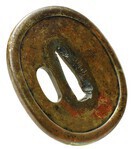
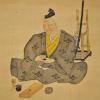


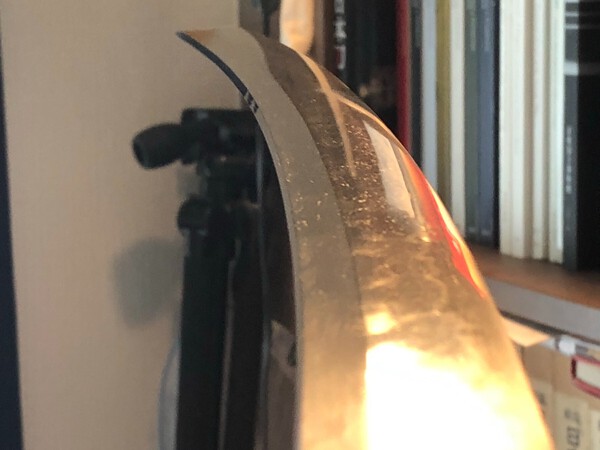


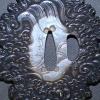
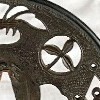
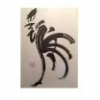




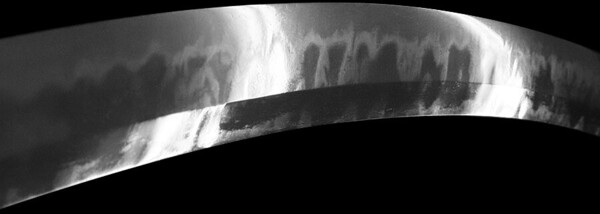






.thumb.png.4c5df79fec171b2dc4a23af38e280a4d.png)


